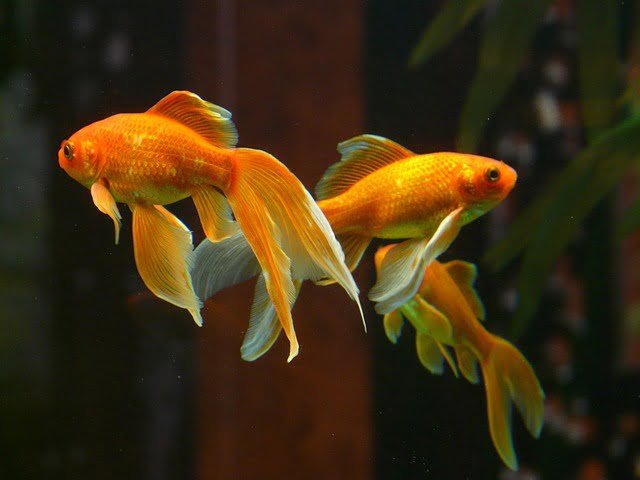Goldfish, with their radiant colors and captivating beauty, have long been cherished as beloved pets and ornamental fish. However, like all aquatic organisms, goldfish are vulnerable to various health issues, with Ichthyophthirius multifiliis, commonly known as Ich or white spot disease, being a prevalent concern. Recognizing the signs of Ich and understanding effective treatment strategies are paramount for maintaining a healthy aquatic environment. This comprehensive guide delves deep into the intricacies of Ich treatment, providing a thorough understanding of the disease and actionable recommendations for mitigation.
Understanding Ich
What is Ich?
Ich is a protozoan parasite that targets fish, attaching itself to the host’s skin and gills. The parasite’s life cycle involves several stages, with the most recognizable being the cysts or white spots visible on the fish. These spots, which resemble grains of salt or sugar, are cysts filled with the Ich parasite. If left untreated, Ich can lead to severe health complications and even death.
Life Cycle of Ich
Understanding the life cycle of Ich is crucial for effective treatment and prevention:
- Trophont (Feeding Stage): The parasite attaches to the fish and feeds on its skin and tissue, causing irritation and the formation of white spots.
- Tomont (Encystment Stage): The mature trophont falls off the fish and settles in the substrate or on aquarium decorations, forming a protective cyst.
- Theront (Infective Stage): The cyst ruptures, releasing hundreds of free-swimming theronts that seek out new hosts, completing the life cycle.
Diagnosis of Ich
Accurate diagnosis is the cornerstone of effective treatment. Recognizing the early signs and symptoms of Ich is crucial:
- White Spots: The most apparent symptom, resembling grains of salt or sugar on the fish’s skin and fins.
- Flashing: Fish may exhibit unusual behavior, such as rubbing against objects or darting erratically, indicating irritation.
- Rapid Gill Movement: Increased respiratory rate and visible stress on the gills are common signs of Ich infestation.
Microscopic examination of skin scrapings can provide definitive confirmation of Ich parasites, aiding in targeted treatment.
Goldfish Ich Treatment
- Salt Treatment
One of the oldest and most effective treatments for Ich involves the use of aquarium salt (sodium chloride):
- Procedure:
- Remove activated carbon from the aquarium filter.
- Gradually add aquarium salt to achieve a concentration of 0.3% (3 grams per liter).
- Monitor water parameters and maintain this salt level for 10-14 days.
- Perform a partial water change and replace the salt that has been removed.
2. Heat Treatment
Elevating the water temperature can accelerate the life cycle of Ich, making it susceptible to other treatments:
- Procedure:
- Gradually raise the water temperature to 82-86°F (28-30°C).
- Maintain this elevated temperature for at least 10 days.
- Ensure adequate aeration as warmer water holds less dissolved oxygen.
3. Medication
Several medications specifically formulated for treating Ich are available:
- Malachite Green: A potent antiparasitic agent effective against Ich.
- Formalin: Another common ingredient in Ich medications, formalin helps eradicate the parasite.
- Procedure:
- Follow the manufacturer’s instructions for dosage and application.
- Remove activated carbon and deactivate UV sterilizers during treatment.
- Monitor fish closely for any signs of stress or adverse reactions.
4. Combination Therapy
In severe or persistent cases, combining multiple treatment methods can enhance effectiveness:
- Salt + Medication: Combining salt treatment with medication can provide a synergistic effect, targeting the parasite from multiple angles.
- Heat + Medication: Similarly, heat treatment can be combined with medication for a comprehensive approach.
However, caution must be exercised when using combination therapies, as they can stress the fish and disrupt the aquarium’s ecological balance.
Preventive Measures of Ich
- Quarantine Procedures
Quarantining new fish before introducing them to the main aquarium can prevent the spread of Ich and other diseases:
- Procedure:
- Set up a separate quarantine tank with similar water parameters.
- Monitor the quarantined fish for signs of illness before introducing them to the main aquarium.
2. Water Quality Management
Maintaining optimal water quality is essential for preventing Ich outbreaks:
- Regular Testing: Monitor water parameters, including temperature, pH, ammonia, nitrite, and nitrate levels.
- Routine Maintenance: Perform regular water changes, clean the substrate, and inspect equipment for signs of wear or malfunction.
3. Stress Reduction
Minimizing stressors can help boost the fish’s immune system and reduce susceptibility to Ich:
- Provide Hiding Places: Create a stress-free environment with ample hiding places and shelters.
- Avoid Overcrowding: Maintain appropriate stocking levels to prevent overcrowding and competition for resources.
Conclusion and Recommendations
Goldfish Ich is a treatable but potentially devastating disease that requires prompt and effective intervention. By understanding the parasite’s life cycle, recognizing early symptoms, and implementing targeted treatment strategies, aquarists can mitigate the impact of Ich and safeguard the health of their goldfish.
- Consultation: Always consult with aquatic veterinarians or experienced hobbyists for personalized advice and treatment recommendations.
- Education: Stay informed about the latest research and developments in Ich treatment and prevention to make informed decisions.
- Vigilance: Regularly monitor fish behavior, water quality, and overall aquarium health to detect and address potential issues promptly.
With proper care, attention to detail, and a proactive approach, aquarists can enjoy the beauty and companionship of goldfish while ensuring their well-being and longevity. Remember, prevention and early intervention are key to combating Ich and maintaining a thriving aquatic ecosystem.
